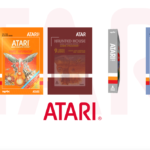DC Fandome said — sign up and get a special NFT just for you! Tweet it, and get another one! Well, I’m just about to buy my Lambo, because I have an NFT and I’m gonna be RICH.
Non-Fungible Tokens, or NFTs, are entries into a blockchain ledger that associate your name with a bit of information in that ledger, usually a pointer to some object on the web, plus some meta-information. My NFT was for a spinning GIF of a Batman comic cover, rendered as if it were a label for a 3 1/2″ floppy disk.
Do I own the Batman cover? Do I own the spinning GIF? Am I legally allowed to display the spinning GIF anywhere? Can I give the NFT to anyone else? Do I have any rights to anything at all?
Let’s find out by reading the 12 page agreement regarding the use of this spinning GIF that everyone who receives one of these NFTs explicitly agrees to:
Can I transfer this NFT to my own, personal wallet?
No. All the NFTs given away here are kept by Palm.io (who are running this for DC) in a “custodial wallet”, which means the NFT you believe you own, you can’t touch or examine. (Remember, the spinning GIF is not the NFT. The NFT is the pointer to it stored in the digital wallet.) DC may, at some point in the future, allow you to take your NFT off their service, or they may not.
If my NFT disappears, can I get it back?
No. If anything at all makes it impossible for me to view my NFT, I cannot hold them responsible. My continued access to my NFT is at their whim.
Is my NFT taxable?
Yes. If I live in a jurisdiction that taxes these sorts of elements, then I will be liable for that tax. The fact that these NFTs are worthless means they likely won’t accrue any tax obligations, but in a bizarre series of events where these become worth something, I could owe tax.
Can I display my NFT on my blog?
Not legally. Nor can I display it on one of those electronic photo displayers for the public to see. Nor can I claim I own any element of the NFT, Batman, courts, owls, the fact that something spins — I have no rights whatsoever to the GIF or the contents of the GIF. However, I do have explicit permission to view the NFT myself, as long as doing so does not earn me any money. Although my blog is not now monetized, at some point in the future I might choose to do so, and at that time displaying the NFT metadata — the spinning GIF — here would be a copyright violation.
Can I make a snapshot of one frame of the NFT metadata (the spinning disk), and show that?
No. It is a violation of the terms to change the NFT metadata (the spinning disk GIF), or to make derivative works from it. Even using the heavily processed image of a small part of the actual cover as the header image for this post is technically a derivative work.
Can I show other people all the cool spinny NFT metadata that I own?
No. I can’t see any way of sharing my collection with anyone else. So, with all these DC NFTs I collect, I cannot share them with anyone; it’s just a little collection that I have to keep secret.
Is this really on the Etherium blockchain?
The wallet that Palm NFT Studio uses to keep track of the ownership of the NFTs is listed on the Ethereum blockchain at 0x19d4f9a260af1d7e0e99a32dbe418956af875c25. I do not know enough about Ethereum and how to see how they are storing the ownership records on the blockchain, but as of this writing, the Ethereum the wallet contains is worth about $223.
Update: I Did Some Research!
Palm.io is running their own little Ethereum-compatible operation; they’re calling it a “side chain” that is run off their own PALM tokens, which are not publicly sold. I would assume that these PALM tokens are backed by Ethereum. Short answer: my NFTs are not on the public Ethereum block chain. PALM runs something called a “PALM Bridge” for communicating into and out of the Ethereum block chain; my guess is that they batch transactions to save on gas fees. You can read more about it on their FAQ.
If I make DC angry and they terminate my account, can I keep the NFT?
Ha ha ha.
Is this a scam?
I paid no money for this. What I was given is worthless. I don’t see any store attached where I could pay actual money to buy this worthless link to an asset over which I have no rights, so… it’s a toy. Maybe there’s still people who would get excited about this. I thought NFTs were stupid back when I first heard about them a year ago, and nothing that has happened since then has changed my mind.
BTW, that spinning Atari Asteroids box that was worth (heh) $15,000 a year ago is apparently worth about $45 now. Given the price history, it never actually was transferred for that price. One user I clicked on has apparently lost $7,500 by trading a wide variety of NFTs that point to ugly spinning GIFs.
There may one day be a case to be made for NFTs, but this DC Fandome thing most decidedly not that. But for better or for worse, my e-mail address is now irrevocably* associated with a pointer to some metadata in a blockchain somewhere that refers to an image of a spinning disk to which I have no rights whatsoever.
* (until they choose to revoke it)
So the TL;DR is…?
I was given, for free, two NFTs that point to two spinning GIFs that I can’t show anyone. The valueless items I was given can be taken away at any time. If, somehow, they should ever have any value, then I can be taxed for possessing them, and it can be taken away from me for any reason or no reason. I cannot transfer “my” NFTs to anyone, or even transfer “my” NFTs to a wallet under my own control. I don’t know if the record of my ownership was, or ever will be, actually recorded on the blockchain. My understanding is that interacting with the Ethereum blockchain is expensive, and I very much doubt anyone is spending real money on this.
How was this supposed to get me excited about the whole NFT craze, again?



After reading your post and the Verge article Syp linked yesterday on MassivelyOP, I now know enough about NFTs to have a basic understanding of what they are. Your post, by the way, was far more helpful in nailing down the details of “what” they are than the Verge piece, which in turn was more informative on the vexed question of “why”.
As far as I can see they’re two things: 1) super-luxury vanity items and/or pretend super-luxury vanity items for people who either have more money than they know what to do with or want to pretend they do and 2) very neat ways to store or transfer vast amounts of cash. Both of these also lend the process to any number of nefarious purposes from gambling and currency speculation to straight up money-laundering and fraud.
It’s not like there’s anything remotely new in this. In fact, it just about reduces a centuries (probably millenia) old process into its Platonic ideal. Why bother growing and shipping all those tulip bulbs when you can just email someone a string of numbers? Whether it ends up being another staple of the art investment market or the next dutch tulip bubble only time will tell – although I would guess we won’t have to wait long to find out.
One question – what happens to your supposed “ownership” of your NFT if you lose the email address associated with it?
People lose NFTs and blockchain things *all the time*.
I *believe* people go on the assumption that they own, or have some permissions to use, the material to which the NFT points. Like those “Bored Ape” NFTs, where people believe they have the right to use the metadata to which those NFTs point as their forum avatars (they do not).
They may have paid thousands of dollars for something they just can’t use.
The info you gathered seems to be mostly overlapping with my understanding so far, with one noteworthy exception.
I thought the only “redeeming” quality (if you can even call it that) was that for example in one use case where a game would only work with NFT avatars, you could “reserve” the exclusivity of using said avatar. So in an overall world perspective still useless, but in this narrow field it would be some sort of uniqueness, like your username. If you think about where you’re allowed to use it, what you wrote would invalidate that use case in a certain way, if you can’t even use it on the game’s forum, to stick with that example.
That’s the thing that has me confused now, again – but I had a special use case in mind, maybe we’re both going too much after some concrete examples, and thus are not enlightened to the big picture 😉
That sounds like someone coming up with a problem to fit their solution. I know there is a lot of discussion about people wondering how they can use their million dollar avatars and not have someone who just cut and pasted the image use it. Tying it to the NFT is definitely something they could do. But then, people have to purchase an NFT to participate, which seems kind of sketch.
There is very much a “selling the Brooklyn Bridge” vibe to the whole NFT thing for me. I’ve seen a couple of articles about NFTs that have been “sold” for increasing amounts until they find a mark, who is eager to buy in for thousands of dollars, only to be left holding the bag with something later generously valued at a few bucks… which, as you so aptly note, bestows no rights in any case.
I have seen a few very passive aggressive arguments in favor of NFTs, which run along the line of “If you don’t like NFTs then you don’t like supporting artists!” But those pitching that line tend to be people who are not artists and who appear all in on the scam side of the sales equation.
Those Cryptopunks and Bored Apes and stuff are just random mix-and-match avatar creator programs. I saw a sample piece of code that could create 10,000 mix-and-match avatars with your own or someone else’s parts library and automatically register those 10,000 NFTs. Where’s the artistry in that? Someone pasted a comic book cover on a 3D rendered diskette. Where’s the artistry in that?
It’s just BS, the whole thing.
An excellent crypto project that has a strong team behind it: Diminutive Coin (https://diminutivecoin.com). It is based on the HMQ1725 algorithm and is designed for maximum security and Peer 2 Peer digital payment. Not to mention, its maximum supply is only 200,000 coins (currently valued at $1 and still rising). Join Diminutive Coin at https://discord.gg/DvD7CC48TD